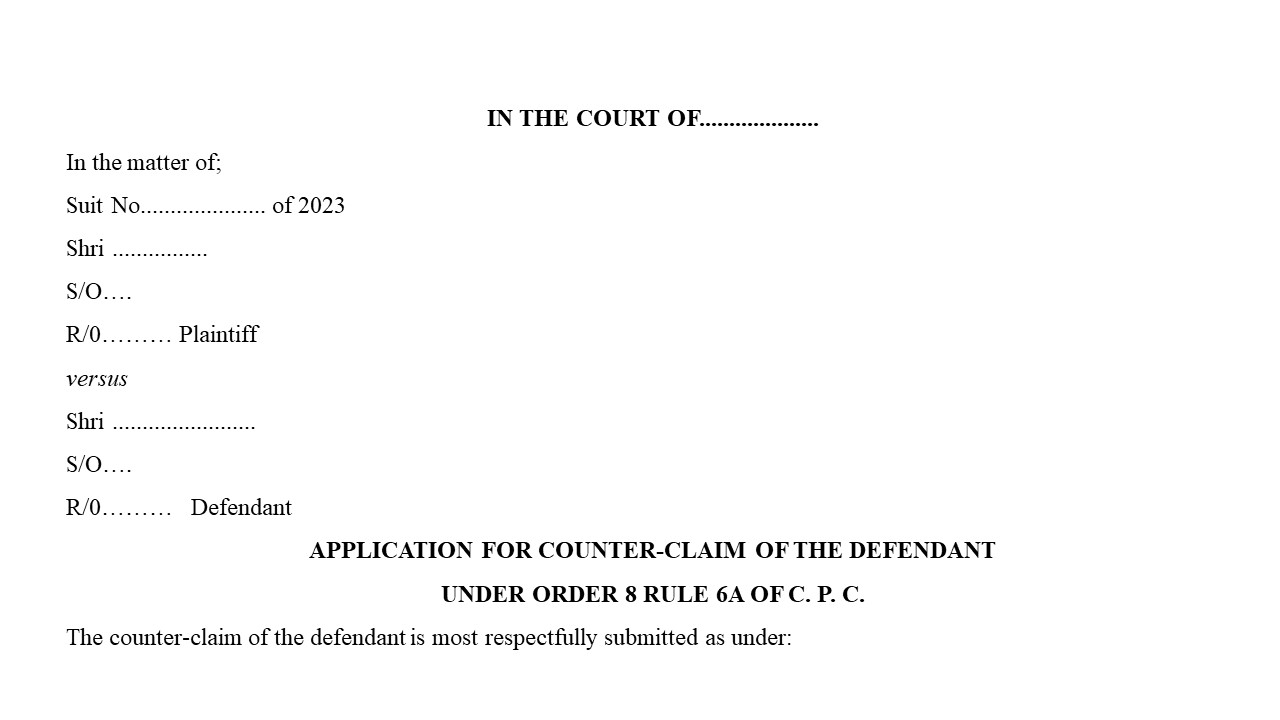Reviews
M.R.P. : ₹ 240.72
(Inclusive of all taxes)
Details
- Product Description: Counterclaim Petition Format under Order 8 Rule 6 of the Civil Procedure Code (CPC) Overview: A counterclaim is a legal action brought by a defendant in response to a plaintiff's claim in a civil lawsuit. Under Order 8 Rule 6 of the Civil Procedure Code (CPC), a defendant has the right to file a counterclaim against the plaintiff if the claim arises out of the same transaction or occurrence that is the subject matter of the plaintiff's claim. The counterclaim allows the defendant to assert their own claims and seek relief from the court. Purpose: The purpose of a counterclaim petition is to enable the defendant to seek redress for any grievances or damages they may have against the plaintiff arising from the same incident or situation that forms the basis of the plaintiff's original claim. Key Elements: When drafting a counterclaim petition under Order 8 Rule 6 of the CPC, certain key elements should be included: Title of the Counterclaim: Clearly state that it is a "Counterclaim" and reference the original suit number and parties involved. Jurisdiction and Court Details: Specify the court in which the counterclaim is being filed and its jurisdiction. Identification of Parties: Clearly identify the defendant (counterclaimant) and the plaintiff (original claimant) along with their respective addresses. Factual Background: Provide a concise and accurate account of the facts that led to the counterclaim. Ensure it is connected to the same transaction or occurrence that forms the basis of the plaintiff's claim. Cause of Action: Clearly state the legal grounds on which the counterclaim is based. This could include breach of contract, negligence, or any other relevant legal cause of action. Prayer for Relief: Clearly state the specific remedies or relief sought by the defendant in response to the plaintiff's claim. This may include damages, injunctions, or any other appropriate relief. Supporting Documents: Attach any relevant documents that support the counterclaim's allegations, such as contracts, invoices, photographs, or any other evidence. Verification: The counterclaim should be signed and verified by the defendant or their authorized representative. Format and Language: The counterclaim petition should be drafted in a formal and concise manner. It should follow the formatting guidelines specified by the court, if any. The language used should be clear, simple, and devoid of any ambiguities. Legal Representation: If the defendant is represented by an advocate or attorney, their name, registration number, and contact details should be mentioned in the petition. Filing and Service: The counterclaim petition should be filed in the appropriate court within the stipulated time frame allowed by the CPC. Additionally, a copy of the counterclaim should be served on the plaintiff or their legal representative. Conclusion: The counterclaim petition format under Order 8 Rule 6 of the CPC is a crucial legal document that allows the defendant to assert their rights and seek appropriate remedies against the plaintiff's claims. It is essential to ensure that the counterclaim is well-drafted, legally sound, and supported by relevant evidence to strengthen the defendant's position in the ongoing civil lawsuit.
